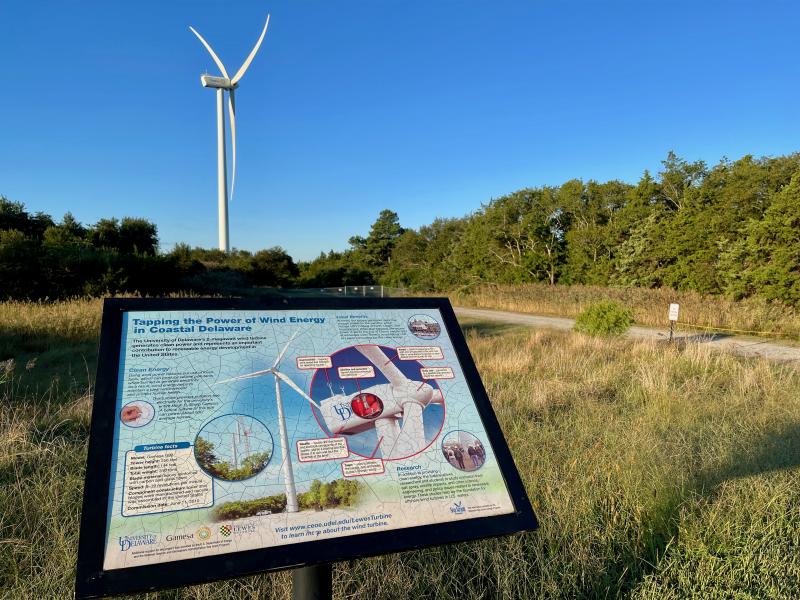In its second decade, UD’s Lewes turbine steadily generating
Whoosh – whoosh – whoosh.
It’s a clean sound that pulses powerfully and quietly around the campus of University of Delaware’s College of Earth, Ocean and Environment in Lewes.
For 11 years now, the 256-foot-tall wind turbine with its 144-foot blades has been generating enough clean energy to power all of the Hugh R. Sharp Campus as well as about 100 homes in Lewes. According to information in a 2020 University of Delaware article noting the 10th anniversary of the turbine’s operation, about 25 percent of its generating capacity exceeds campus demands and is sold wholesale to Lewes. In purely residential terms, the Lewes turbine is rated as a 2-megawatt unit and generates enough electricity to power 500 average-sized homes.
The turbine’s blades turn when the wind is blowing between 8 and 56 miles per hour. Depending on wind speed, its revolutions per minute fluctuate between 9 and 19. In its first 10 years of operation, the turbine generated more than 50,000 megawatt hours of electrical power. The 5,400 megawatt hours in the 2019-20 year represented its greatest single-year production.
Jeremy Firestone serves as director of University of Delaware’s Center for Research in Wind. “We continue to partner with Gamesa (now Siemens Gamesa Renewable Energy), sell power to UD and to the City of Lewes, use revenues for research, and separately, UD established with DEMEC a graduate fellowship program through the transfer of renewable energy credits to DEMEC,” said Firestone this week. DEMEC, Delaware Municipal Electric Corporation, is a cooperative electricity-buying program used by Lewes and many other regional municipalities.
Revenue realized by the university from sale of electricity generated by the Lewes turbine funds research into wind power and energy storage. Much of that research is conducted by graduate students who receive fellowships funded by turbine revenues and in cooperation with DEMEC.
Research projects include studies of the effect of saltwater spray and resulting corrosion on turbines and their associated equipment, and impacts on wildlife such as migrating birds and bats. A number of years ago, research determined that more bat fatalities than expected were occurring around the Lewes turbine. Adjustments were made to operating hours, especially in the evening just after dusk when bats tend to be active, and also during bat migrating months between July and September. According to university reports, those adjustments significantly decreased turbine-related bat fatalities.
Firestone said the Lewes turbine has an expected life expectancy of between 20 and 30 years, and with component upgrades, it could possibly exceed that expectancy.
In the meantime, the turbine, which has become an iconic fixture of the Lewes landscape, continues to whoosh away and generate the electricity that’s so increasingly vital to 21st century human existence.
























































